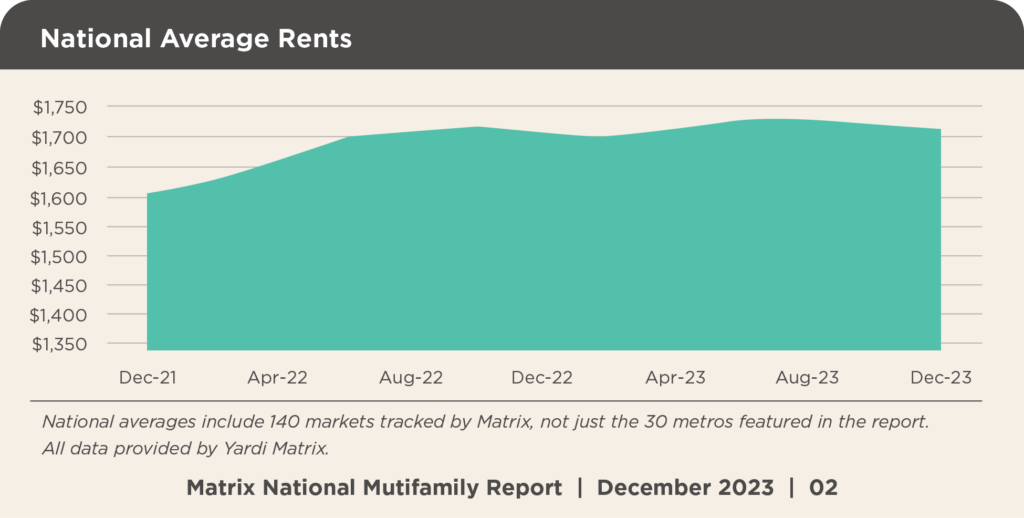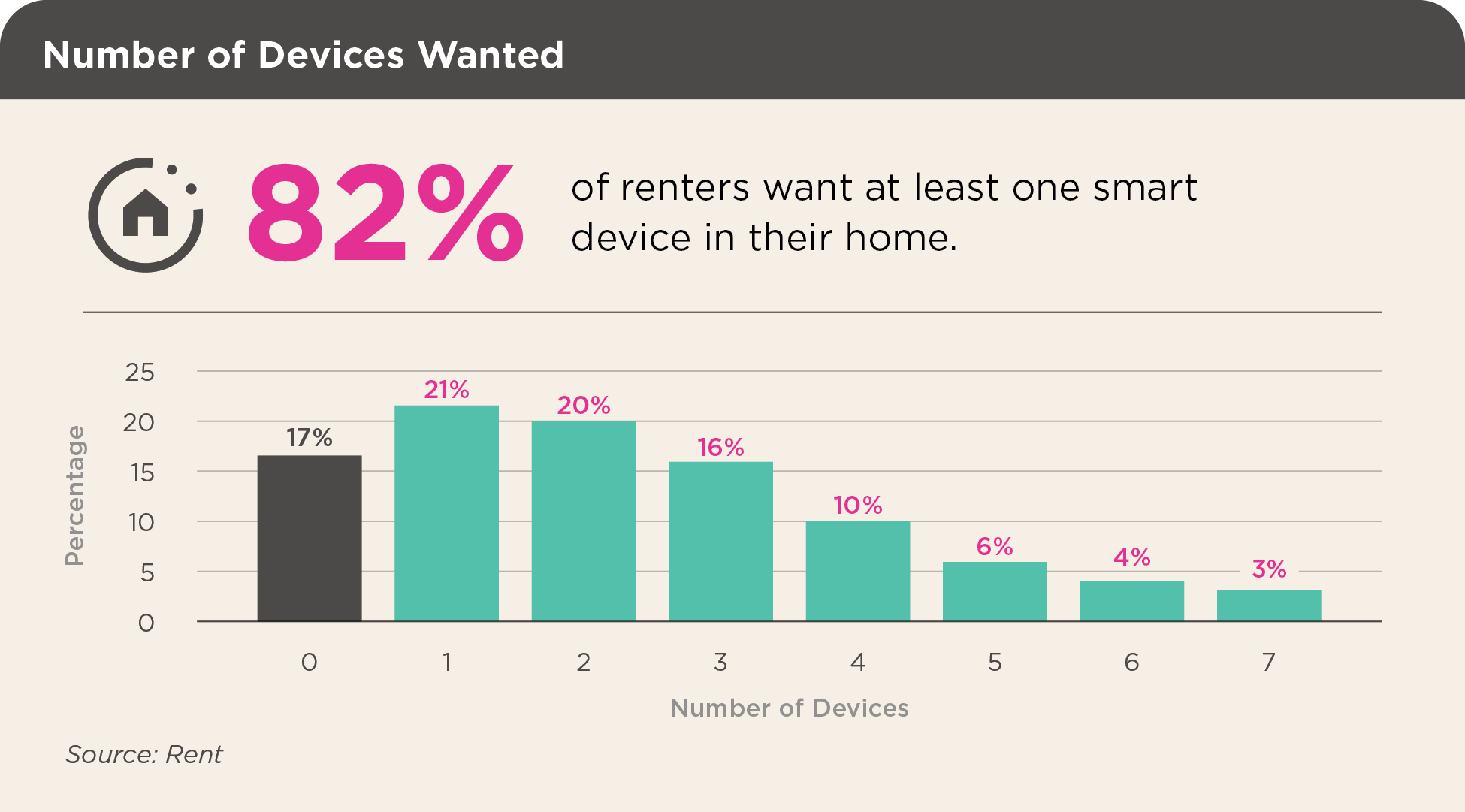A Landlord’s Guide to the Softening Market as Indicated by 2023 Reports and Surveys
With 2023 in the books, results from annual surveys and studies are showing us what to expect for property trends in 2024. For multifamily rentals, we’re seeing clear signs of a softening market. For one example, this survey shows only 40% of small multifamily renters feel certain they’ll renew their lease – and an additional 33% are “on the fence”, with the remaining 27% on the hunt for a new home. The Landlords face the critical challenges of maintaining occupancy and rental income as they fill vacancies.
Tenant retention and acquisition require a multifaceted approach to get the best results. Here are some key data points and actionable strategies for landlords to consider:

1. Review and Adjust Rental Prices
In December, the average U.S. multifamily asking rent decreased by $4, or 0.2%, to $1709 (Zillow). In a softening market, competitive pricing is key. Landlords should conduct thorough market research to understand current rental trends and adjust their pricing strategies accordingly. This doesn’t always mean lowering prices; sometimes, it’s about aligning your offerings with market expectations. Utilize tools and platforms that provide real-time rental data to make informed decisions.

2. Focus on Tenant Retention
The national average cost of a turnover is equal to three months’ rent not including the lost rent during the vacancy (Visio). Strategies such as offering renewal incentives, maintaining open and transparent communication, and promptly addressing maintenance issues can enhance tenant satisfaction and reduce turnover rates. Minor property upgrades don’t have to be expensive and are highly valued by tenants. Installing smart home solutions like smart locks, lighting systems, and storage lockers not only impacts satisfaction, but can increase your rental price without upsetting most tenants. According to this survey from 2022, 82% of all tenants wanted at least one smart home technology upgrade. And tenants paying between $501 and $2000 per month were willing to pay an additional $40-$50 a month just to have this amenity added. Consider implementing your own surveys or less formal check-ins to gauge the desires your tenants might have.

3. Embrace Technology Solutions
With modern property management platforms, you can find automated solutions to many aspects of the business. These automations increase tenant satisfaction by streamlining communication and payments, and ensuring document retention. A poll from January of 2023 showed half of the surveyed tenants stated digital rental payment options were important to them.
For filling vacant properties, platforms that facilitate secure self-guided tours increase property traffic by 40%, reduce vacancy periods, and almost double conversion rates to 9.3% compared to traditional showings at 5%. While harder to calculate, there’s a lot of value in reducing the amount of personal time and energy required to manage your properties. Time is money, after all. Fun fact – Ben Franklin actually coined that term in a 1748 essay.
4. Fine-Tune Your Operating Expenses:
Expenses such as labor, maintenance and insurance jumped sharply for multifamily owners in 2022 and 2023. Not looking great for 2024. Some categories of growth will subside as inflationary pressures abate, but other categories may not. For example, insurance premiums will likely keep increasing, as insurers must cover for the growing number of weather-related payouts. Tightening your operational budget can help offset revenue fluctuations. Review your current expenses and identify areas for cost savings, such as renegotiating service contracts, Insurance rates, investing in energy-efficient upgrades, or adopting preventive maintenance to avoid costly repairs. Every dollar saved on expenses directly improves your property’s profitability.
5. Enhance Property Appeal
The key indicator of the rental market’s health and competitiveness is the rental vacancy rate, and it is slowly increasing. In a competitive market, differentiating your property can help attract and retain tenants. Small upgrades or improvements, such as fresh paint, updated fixtures, or landscaped exteriors, can significantly enhance a property’s appeal. Consider amenities or features that add value to tenants, such as high-speed internet access, in-unit laundry, or secure parking. With an expected 500,000 additional multifamily units hit the U.S. market this year, everything from a new coat of paint to the aforementioned digital and Smart Home solutions could be dealbreaking.
6. Leverage Social Media and Online Marketing
A strong online presence significantly increases your property’s visibility. Level up your communication based on the tenants’ preferences. Utilize social media platforms and rental listing websites to showcase your property through high-quality photos, self-guided tours with “See it Now!” call to action and engaging descriptions.Targeted online advertising can also reach potential tenants actively searching for rentals in your area.

Citations
Bachaud, N. (2023, December 8). A blend of stability and gradual changes in the U.S. rental market (November 2023 Rental Market Report) – Zillow Research. Zillow. https://www.zillow.com/research/november-2023-rent-report-33470/
Lapin, H. (2023, June 1). Landlord’s Guide To Keeping Quality Tenants | Visio Lending. Visio. https://www.visiolending.com/blog/tenant-retention
Maher, L. (2024, February). How to set a fair price for your rental property. https://instashow.app/how-to-set-a-fair-price-for-your-rental-property/
Rent. (2023, June 26). Smart home technology that renters want in 2022. Rent. Research. https://www.rent.com/research/smart-home-technology-for-renters-survey/
Triplett, J. (2023, August 16). What attracts renters to smaller multifamily properties? Rental Housing Journal. https://rentalhousingjournal.com/what-attracts-renters-to-smaller-multifamily-properties/
Yardi Matrix. (February, 2024). Matrix Multifamily National Report-January 2024. https://www.yardimatrix.com/publications/download/file/5071-MatrixMultifamilyNationalReport-January2024
Conclusion.
Heading into 2024, the average national asking rent has been dropping. Given the deceleration in many markets from supply growth and declining affordability, along with normal seasonal trends, rents are likely to remain flat until the spring. The multifamily rental market’s current dynamics require landlords to be adaptable, proactive, and innovative. By strategically adjusting rent prices, focusing on tenant retention, controlling expenses, and leveraging technology, landlords can navigate the challenges of a declining market. Embracing these strategies will not only help maintain occupancy rates and rental income but also position your properties for long-term success.





